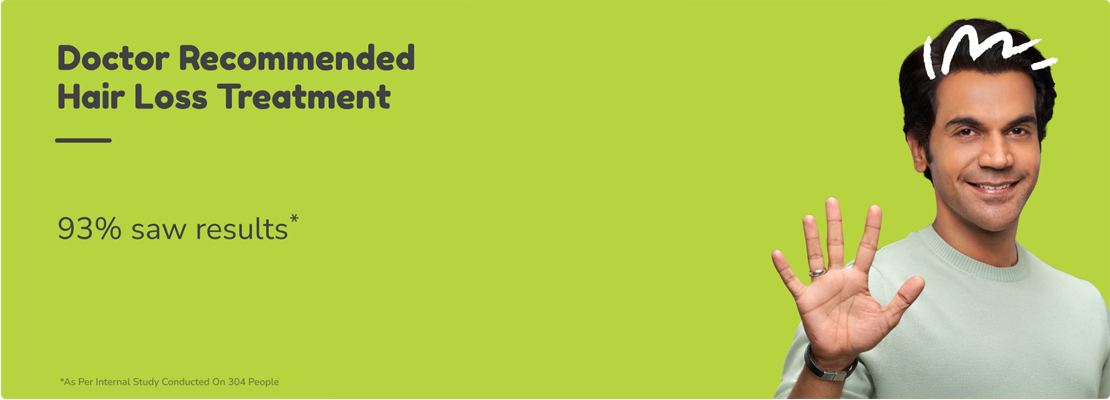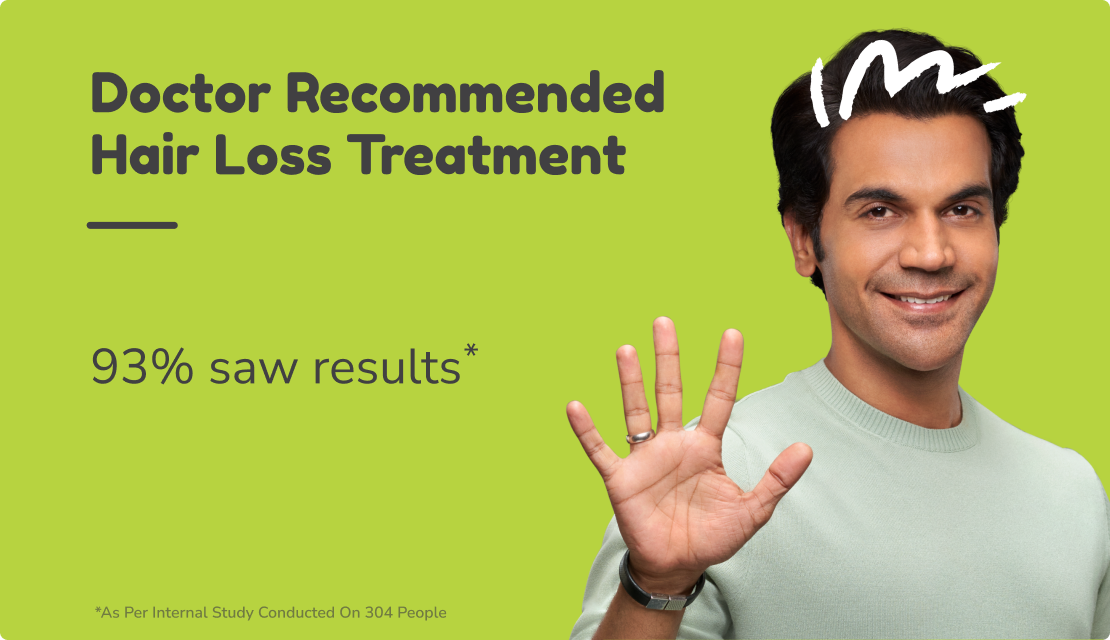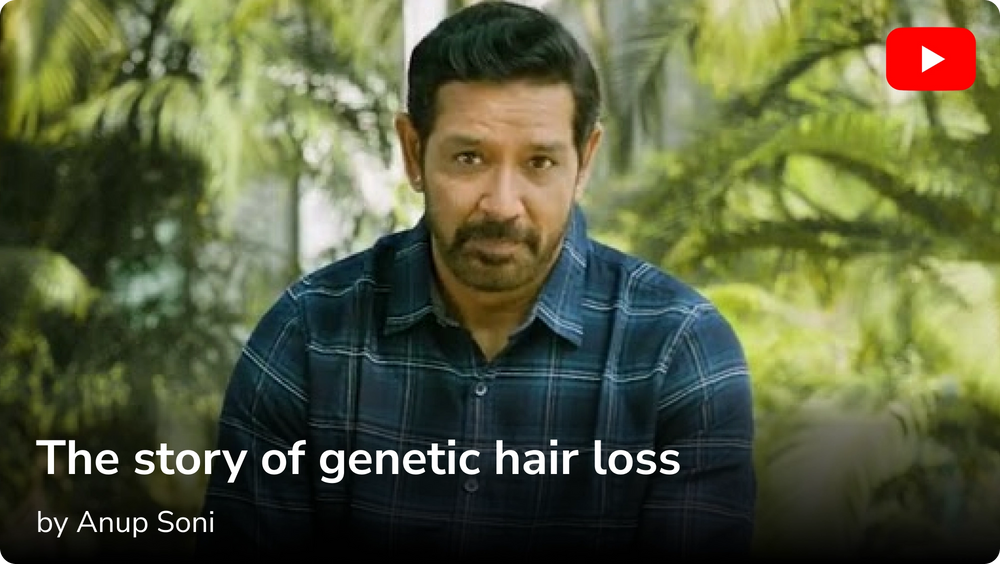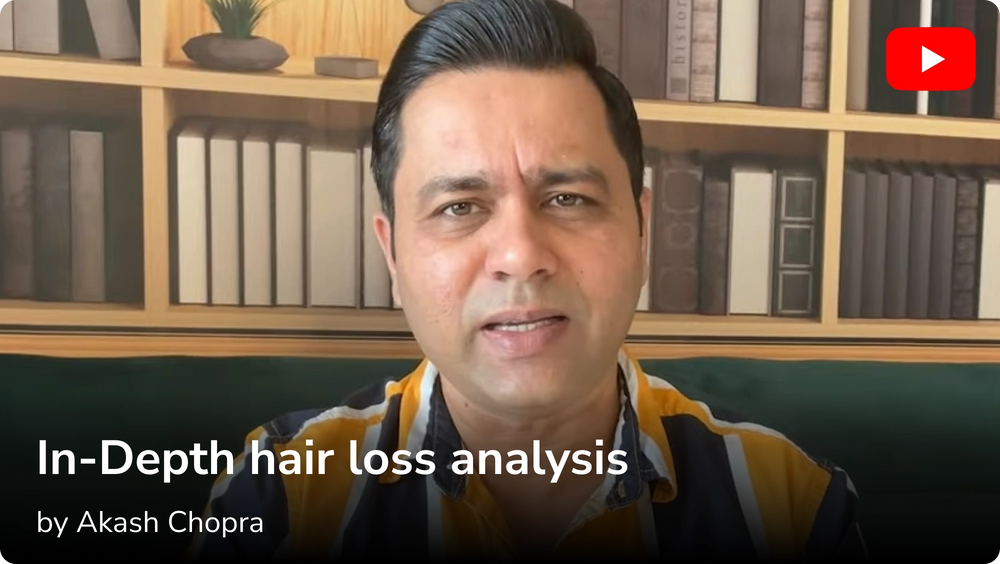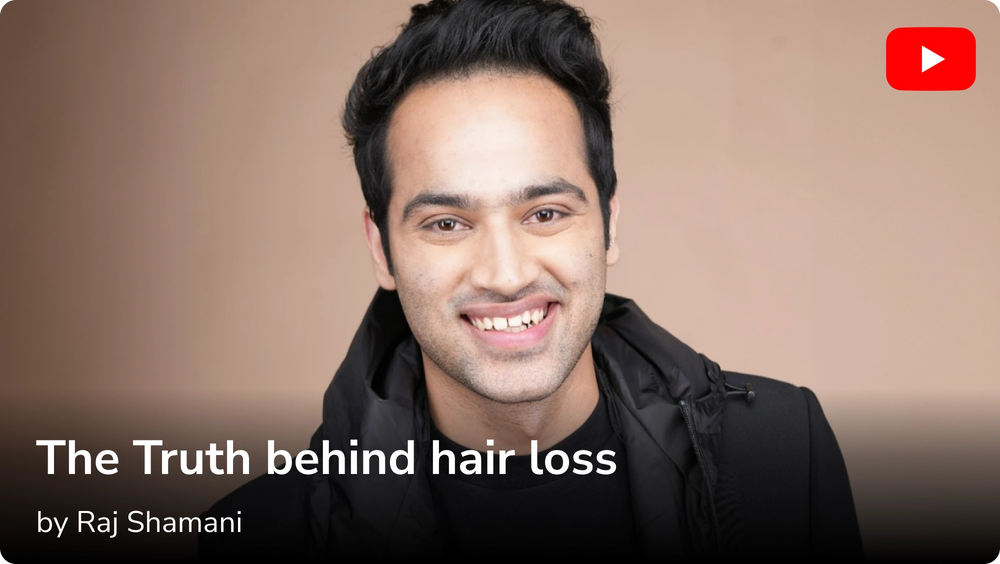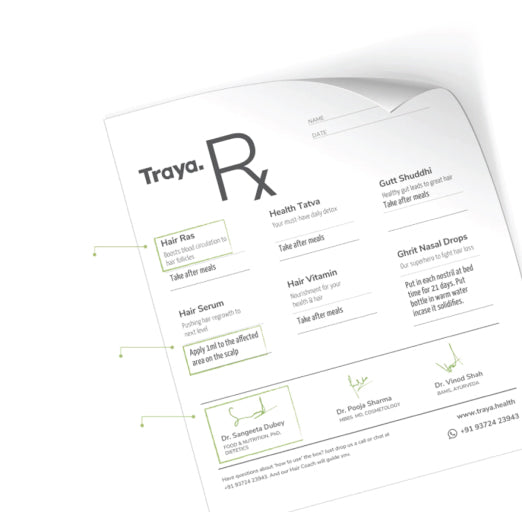Hair thinning and shedding are the most common hair problems these days. If you are looking for a solution that works wonders and is well-tested, you have made the right choice! Many people use Minoxidil because of its undeniable benefits.
And now that you have stumbled upon this article, Surely you must’ve heard of Minoxidil as a treatment to regrow hair. This medication comes in oral and topical form, one can be consumed like a medicine and the other can be applied directly onto the scalp.
This formula is used in 2% to 5% as a topical solution and 0.63mg to 2.5 mg as a tablet. Around 80%-90% of people have seen positive changes by using this treatment. Let’s look into the final results after going through this treatment and everything else you need to know!
How long does minoxidil take to work?
With thorough research over the years, researchers have found that 2 out of 3 men have seen positive results in regrowing their hair. Usually, it can take 3 months to 1 year to see results with consistent usage.
NOTE: All the images below are of Traya customers using Traya's complete holistic treatment plan. The below customers had Minoxidil as a part of their kit along with other Ayurvedic products to ensure that the root cause of the hair loss is resolves. One product cannot solve hair loss, hence, we recommend you to give Traya's free hair test and get a holistic treatment plan for your hair care.
Traya Results in 7 months (Before-After)

In 4 months, we can see that the patient has recovered a significant amount of hair and the medication worked on them successfully. Just like the images shown above, it’s best to always click pictures and keep track of your progress!
If you’re consistently applying Minoxidil (with the holistic plan) for 6 months, then even though your regrowth must be a bit slower, in due time you can see a significant amount of change. Also, normally people take around 6 months to see the changes, so don’t worry about it taking too long. The results will be prominent and hair regrowth will be significant and achievable.
Also Read: Redensyl vs Minoxidil : What should I use for my Hair Regrowth?
Minoxidil results after 1 year

After a year of using Minoxidil, people can expect hair regrowth, density, and thickness in hair and also minimal to no hair fall. One year of consistent use of Traya's holistic plan containing Minoxidil can help people suffering from a great deal of hair loss recover their hair and take steps to make them healthier.
We can see through these results that over time many people see positive results in different courses of time, The best way to identify progress is through tracking it by clicking pictures and seeking regular professional help.
More Traya Before After Images:



How to Know if Minoxidil is Working for You?
The results vary from person to person, one can see changes within 3 months while one can take a year or so. But fear not! Here’s how you can determine if the formula is working for you.
- You can notice a slight shedding of hair for a certain period of time, this is one of the signs that Minoxidil has started working on your scalp.
- As minoxidil promotes hair growth, you can notice the length of your hair grows faster than usual in 3 - 6 months of consistent use.
- Your hair will thicken and become denser over time.
These signs are quite common to notice the effectiveness of the formula. One should also note that Minoxidil works best for people who are under the age of 40 and are having early stages of Androgenetic Alopecia, which is often referred to as pattern baldness due to genetics.
Also read: Does Minoxidil Work?
How to Know if Minoxidil is NOT Working for You?
Minoxidil primarily has positive results after careful and consistent use but there are still some chances that it may not work for you, so don’t worry! Here are some signs you need to look out for:
- If your hair continues to excessively shed after 2 - 3 weeks.
- If you don’t witness any hair growth in 3 - 4 months.
- If you don’t see any change in your hair or scalp in 3 - 9 months.
These signs will signify that Minoxidil might not work for you. But listen, don’t worry too much about that. There is always a solution to every problem so if this treatment isn’t what’s best for you then trying something else can work too!
The key is to not stop trying and if you wish to avoid the initial experimenting or if you are already tired of doing so, Take Traya’s Free Hair Test which will help you to understand the root cause of your hair problem and will suggest the treatment which will work best for you.
Also Read: Redensyl Side Effects: Benefits, Ingredients, & How to Use
How to Use Minoxidil?
With consistent use, proper application of the topical solution of minoxidil is also a must! Refrain from applying too much or too little and follow these steps to avoid any mistakes
- Before the application of the solution, remember to always keep your scalp dry. Wet hair can cause the solution to dilute and its effects won’t be as prominent then.
- Minoxidil is usually applied with the help of a dropper, so fill the whole dropper which consists of 1 ml of the solution, apply it to the affected places on your scalp, and massage it gently.
- You need to keep the medicine on your scalp for a minimum of 4-5 hours before that do not shampoo or wet your hair in any way.
- After the application of the medicine, Wash your hands thoroughly to avoid reaching it on your sensitive areas like eyes, nose, or ears.
- Refrain from using any hairdressing tools while Minoxidil is applied to the hair. You can use these tools after washing your hair after a few hours of keeping the medicine on.
- Lastly, Do not overuse the product and only apply the dosages recommended by the doctors or Hair coach.
Before applying Minoxidil, do keep these steps in mind, and if at any point you feel any sensation of irritation, redness, etc. then immediately consult a Hair care professional.
Oral vs Topical Solution of Minoxidil
Minoxidil can be consumed Orally as a medicine and can be applied directly onto the scalp through a solution. Both of these methods result in the regrowth of hair and are trusted to give positive results. Even though the composition is the same, there are quite a few differences in each to bear in mind.
|
Oral Minoxidil |
Topical Minoxidil |
|---|---|
|
This comes in the form of a tablet, which varies from 2.5 mg to 5 mg in composition. |
This comes in the form of a solution, which varies from 2% to 5% in composition. |
|
Minoxidil taken orally is diluted into the bloodstream which ten is spread throughout the system. |
Topical Solution is applied directly onto the scalp with a lower chance of getting into the bloodstream and only working on the scalp |
|
Some noticeable side effects are, headaches, dizziness, insomnia, etc |
Some side effects are slight hair shedding, flakiness in the scalp, and can sometimes change the texture of the hair. |
|
Hair growth is seen in the whole body as it is consumed orally |
Effects are seen on the areas only where the solution is applied |
With these differences, you can identify the type of Minoxidil which will be best suited for you,
Benefits Of using Minoxidil
Minoxidil is packed with benefits! It is well-researched and tested to be the best treatment for hair regrowth, it comes in the form of topical solution, foam, and oral tablets.
This medication can be bought without a prescription and can be used in any form which is available as per need.
FDA (Food and Drug Administration) has approved this medication for treating male and female pattern baldness.
With minimal side effects, this medicine can be used for areas other than the scalp to regrow hair, such as beard, etc. (Note: Minoxidil can be used to regrow hair but if you don’t have hair naturally in certain regions then the solution may not work)
Side-effects of using Minoxidil
You must have had ample reasons by now to believe that Minoxidil is a trusted product to use. But just like any other medication, using Minoxidil has some side effects as well. It may be mild but it is always better to know everything about the products you use on yourself.
Applying Minoxidil to your scalp can sometimes cause flakiness, redness, or itching.
But if you face issues like allergic reactions, Rapid heart rate, Dizziness, or Faintness then it is best to stop the medication immediately and consult a hair care professional.
Important Note
Researchers have found that Stopping the treatment of Minoxidil abruptly can trigger hair fall again. It is advisable for everyone who uses it to not end the course until or unless recommended by the doctors.
It can get absorbed into your system, Minoxidil is primarily applied topically to the scalp, but a small percentage can be absorbed systemically into the bloodstream. This increases the risk of systemic side effects, especially if the recommended dose is exceeded.
Who Should Avoid Using Minoxidil?
Here is a list of individuals who should potentially avoid using Minoxidil:
- Pregnant or Breastfeeding Women
- Children, teenagers, or anyone below the age of 18
- People having Heart Conditions
- People having wounds or allergies on their Scalp
If you are meeting any of these conditions then you must avoid using Minoxidil. It is advisable to seek professional help in cases such as these as Minoxidil may show certain side effects which can be harmful. If the medication is suggested by a trusted professional then only you should go ahead with it.
Key Takeaways
- Minoxidil comes in the form of a topical solution and can be taken orally as well.
- Minoxidil Results can be seen in a span of 3 - 6 months which can go to a year. Consistent use with proper application will determine positive results.
- You will feel that your hair has become denser, and thicker and it sheds a little bit at the start to know if it’s working for you.
- If you don’t see any changes in 3 - 4 months and have excessive hair shedding for more than 2 - 3 weeks, then the solution is probably not working for you.
- Discontinuing the treatment abruptly can lead to the recurrence of hair fall.
- Oral and Topical Solutions of Minoxidil might have the same composition and give the same results but have their own sets of pros and cons.
- Lastly, Minoxidil can be a good medication to regrow your hair if used properly.
In this article, we noticed how minoxidil is a good medication overall but its side effects are also what we need to be mindful of and also the fact that the treatment shouldn’t be discontinued in any way. Now obviously, due to our busy schedules, we tend to forget about ourselves but that doesn’t mean that there is no way we can go through with it.
If you’re afraid that you might not continue this treatment due to your busy schedule then worry not! Here’s how you can build a habit of taking care of yourself without disturbing your working or school life.
Traya’s Holistic Treatment Plan
- With the power of 3 Sciences, Ayurveda, Dermatology and Nutrition, our Products and medications are made to eradicate the root cause of your hair concerns.
- Traya understands that there is no ONE-SIZE-FITS-ALL treatment for hair loss. Thus, our plan is personalised as per your specific hair fall problem.
- Gain access to book a call with our Hair Coach to gain regular insights and updates on your treatment.
- Unlock Traya’s Diet plan made for you which is easily accessible on our App.
- Say goodbye to trial and error with our treatment process! Trust the process and see the results you have always desired.
-
Take Traya’s Free Hair Test today and take the first step towards lasting transformation.
People Also Ask
Q. How long does minoxidil take to work?
Minoxidil Results vary from person to person, but usually one can see results within 2 to 6 months of daily and consistent application. To see positive results it is advisable to stick to the recommended dosages given by hair care professionals.
Q. Can Minoxidil cause hair loss?
Minoxidil typically induces minimal side effects, such as mild itching, burning, or flaky skin. Initially, it may cause increased hair shedding as it accelerates the resting phase of hair. However, it also extends the growth phase, ultimately leading to new hair growth that should replace the shed hair. Shedding varies from person to person, with some experiencing it more severely.
Q. Does minoxidil cause hair shedding after Six Months?
Excessive Hair shedding due to Minoxidil lasts for at most 2 to 3 weeks and nominal hair shedding may go on until 8 weeks. After that, Minoxidil starts to show its effect on the scalp and works on the regrowth of newer and healthier hair.
Q. What is the success rate of minoxidil?
It is said that 80% to 90% of people see positive changes in their hair after using Minoxidil. It ideally works on most people but if you encounter any side effects such as Rapid Heart Rate, Allergies, or Dizziness then you must immediately stop the treatment and seek help from a hair care professional.
REFERENCES
Poonkiat Suchonwanit | Sasima Thammarucha | Kanchana Leerunyakul | August 2019 | Minoxidil and its use in hair disorders: a review | https://www.ncbi.nlm.nih.gov/pmc/articles/PMC6691938/
WebMD | Minoxidil Solution, Non- - Uses, Side Effects, and More | https://www.webmd.com/drugs/2/drug-3503/minoxidil-topical/details
Preeti Patel | Trevor A. Nessel | Dinesh Kumar D | February 2024 | Minoxidil - StatPearls | https://www.ncbi.nlm.nih.gov/books/NBK482378/



